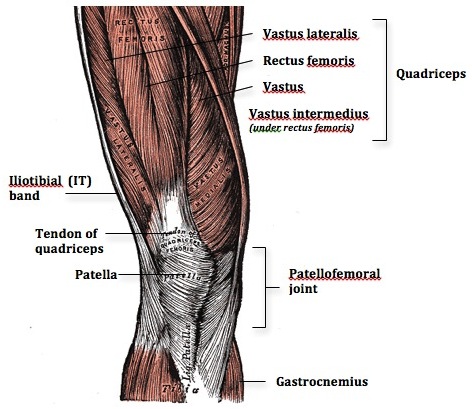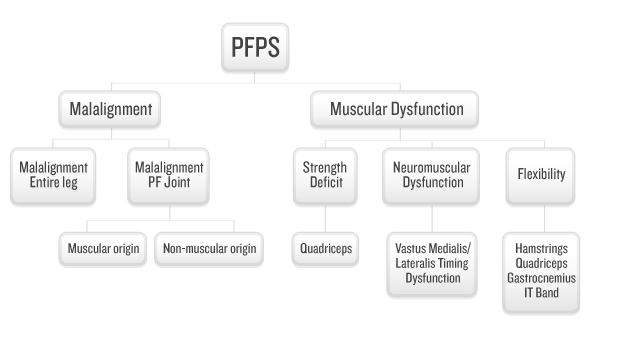Combatting Knee Pain

Many of you have experienced some form of knee pain at some point in your lives. Whether you are an elite athlete, a weekend warrior, or simply someone who likes to run as an escape from your daily stress, the potential is there to develop some form of knee pain.
Patellofemoral pain syndrome, or PFPS is pain that is present in the front of the knee as a result of physical and biochemical changes in the patellofemoral joint, the joint between your patella (knee-cap) and femur (thigh).[1]
Contrasted with overuse injuries that are associated with tendinitis, PFPS can be classified as more of an “overload” injury that places added stress to the joint during activity while the knee is flexed.
If you have ever suffered from PFPS, you might recall having increased pain when going down steps or walking down hills. The reason for this pain, is the added stress placed upon the patella during those activities in which the knee is flexed and passes over the foot.
The muscular factors that contribute to this include possible weakness of the quadriceps and hip muscles as well as tightness in the hamstrings, calves, and ITB (iliotibial band). The following diagram breaks down the different factors that contribute to PFPS.
A study conducted by Ferber et al looked at the relationship between hip abductor strengthening and PFPS.[2] Hip abductors are the muscles that move your hips inwards, towards the central line of your body. Ferber’s study found that, over a three-week period, strengthening hip abductors in subjects who had PFPS, resulted in decreased pain.
Your health care provider can help get you on the right path to recovery and can help you identify factors that contribute to your knee pain. A skilled physical therapist that is knowledgeable in the biomechanics of the knee can outline an effective treatment program that includes specific exercises to address your individual needs.
This should include strengthening of your quadriceps, your hip abductors, as well as your external hip rotators. Stretching should focus on the hamstrings and calves in order to decrease the pressure on the back of your knee and the pressure they can place upon the patellofemoral joint. Stretching should also include the ITB, which can cause the patella to track laterally.[3]
Despite everything that your health care provider can do for you, in the end, you play the most critical role. It is up to you to commit to your program and follow it consistently in order to achieve the results that you want. Working closely with your physical therapist, you can combat patellofemoral pain and get you back to enjoying your active lifestyle.
References[1] Juhn Mark S. D.O. Patellofemoral Pain Syndrome: A Review and Guidelines for Treatment. Am Fam Physician. 1999 Nov 1;60(7):2012-2018.[2] Ferber Reed, Kendall Karen, Farr Lindsay. Changes in Knee Biomechanics After a Hip-Abductor Strengthening Protocol for Runners With Patellofemoral Pain Syndrome. J Athl Train. 2011 Mar-Apr; 46(2): 142–149.[3] Khaund Razib, Flynn Sharon H. Iliotibial Band Syndrome: A Common Source of Knee Pain. Am Fam Physician. 2005 Apr 15;71(8):1545-1550.


























You are the most important person in the health and care of your knee and this article confirms that 🙂